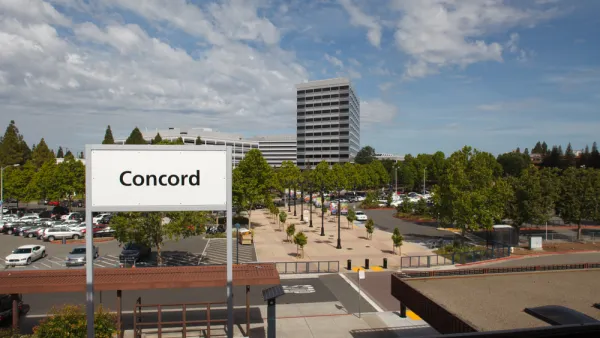As cities across America continue to pour public funds into limited use venues in their downtowns, American Dirt looks at why such venues, and convention centers in particular, refuse to engage with their surrounding streets or neighborhood.
With a focus on the Greater Columbus Convention Center, originally designed by Peter Eisenmann in 1993 and expanded six
years later, American Dirt probes why the designs for "big ticket items" such as arenas, stadia, and performance halls continue to ignore their context at a time when "street-level engagement for large projects in
city centers should, by this point, seem like a foregone conclusion."
While acknowledging the economic development benefits such facilities can bring, the author is alarmed by "an escalating tendency to
push these hulks right into the heart of the city, with practically no other
street-level storefronts, offices, or visual stimuli."
"Nothing this article explores is novel within the world of
urban design," notes the author, "but it warrants extra consideration because, even as many cities
are catching on to strong street-level engagement with other publicly funded
ventures, they continue to get convention centers wrong."
"Civic leaders across the country learned
a lesson from the relative isolation of Chicago's McCormick Place, but it's the
wrong lesson. Rather than taking a
cue that its isolated position estranged it from the hotels and the attractions
of downtown Chicago, other cities have imitated its hulking architecture while
displacing the buildings that originally helped a central business district
become a locus of all kinds of activity."
FULL STORY: Enticing visitors downtown…and then incarcerating them.

Analysis: Cybertruck Fatality Rate Far Exceeds That of Ford Pinto
The Tesla Cybertruck was recalled seven times last year.

National Parks Layoffs Will Cause Communities to Lose Billions
Thousands of essential park workers were laid off this week, just before the busy spring break season.

Retro-silient?: America’s First “Eco-burb,” The Woodlands Turns 50
A master-planned community north of Houston offers lessons on green infrastructure and resilient design, but falls short of its founder’s lofty affordability and walkability goals.

Test News Post 1
This is a summary

Analysis: Cybertruck Fatality Rate Far Exceeds That of Ford Pinto
The Tesla Cybertruck was recalled seven times last year.

Test News Headline 46
Test for the image on the front page.
Urban Design for Planners 1: Software Tools
This six-course series explores essential urban design concepts using open source software and equips planners with the tools they need to participate fully in the urban design process.
Planning for Universal Design
Learn the tools for implementing Universal Design in planning regulations.
EMC Planning Group, Inc.
Planetizen
Planetizen
Mpact (formerly Rail~Volution)
Great Falls Development Authority, Inc.
HUDs Office of Policy Development and Research
NYU Wagner Graduate School of Public Service




























